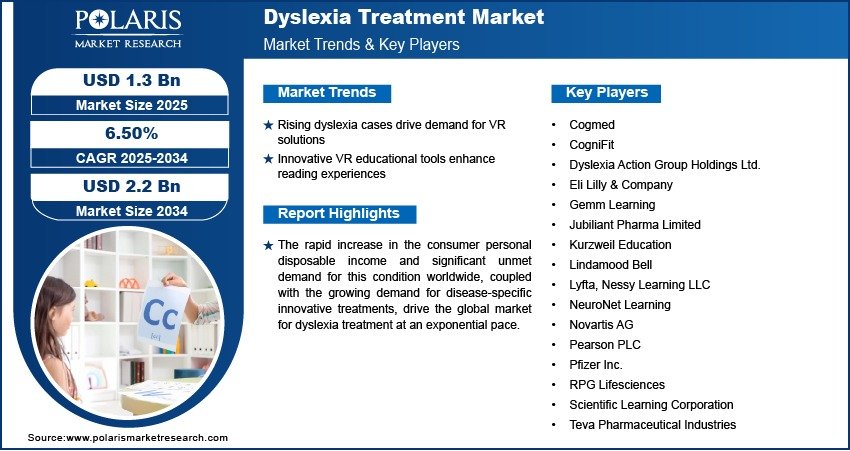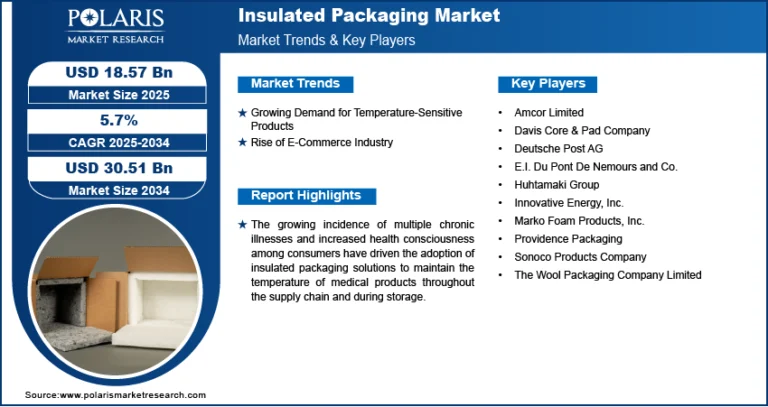Dyslexia Treatment Market Projected to Reach USD 2.2 Billion by 2034 | CAGR of 6.50% Anticipated

The global dyslexia treatment market was valued at USD 1.2 billion in 2024 and is projected to grow at a steady CAGR of 6.50% between 2025 and 2034. The market is being driven by growing global awareness, early diagnosis, and enhanced access to special education programs. Governments, educational institutions, and healthcare providers are increasing efforts to address learning disabilities, especially dyslexia, which affects reading, spelling, and writing skills. These developments are creating a strong foundation for sustained market expansion.
Key Market Trends:
The dyslexia treatment industry is witnessing increased integration of digital learning platforms, including AI-based tools and virtual tutoring programs. EdTech companies are investing heavily in dyslexia-focused software and personalized learning applications, offering interactive modules that improve phonological awareness and reading fluency. Another prominent trend is the growing availability of multisensory learning techniques, including audio-visual content, that cater to diverse learning needs. Moreover, the rising number of specialized schools and therapy centers is shaping a more inclusive educational environment.
Market Size & Forecast:
- Market size value in 2024 – USD 1.2 billion
- Revenue forecast in 2034 – 2.2 Billion
- CAGR – 6.50% from 2025 – 2034
Market Overview:
Dyslexia, a common neurodevelopmental disorder, affects approximately 5–10% of the global population. It is characterized by difficulty in processing language, particularly in reading and spelling. Treatment typically involves a combination of specialized instruction, cognitive behavioral therapy (CBT), educational apps, and assistive tools. With increasing diagnosis rates and heightened sensitivity towards learning disorders, both public and private sectors are investing in therapeutic programs, software development, and educational support systems.
Key Growth Drivers:
- Increasing awareness and early diagnosis of dyslexia through school screening programs.
- Government initiatives promoting inclusive education and funding for special education needs.
- Adoption of digital therapy tools and mobile-based learning platforms for personalized treatment.
- Growing focus on neuropsychological assessments and evidence-based intervention strategies.
𝐆𝐞𝐭 𝐄𝐱𝐜𝐥𝐮𝐬𝐢𝐯𝐞 𝐒𝐚𝐦𝐩𝐥𝐞 𝐏𝐚𝐠𝐞𝐬 𝐨𝐟 𝐓𝐡𝐢𝐬 𝐑𝐞𝐩𝐨𝐫𝐭:
https://www.polarismarketresearch.com/industry-analysis/dyslexia-treatment-market/request-for-sample
Challenges:
Despite positive momentum, the dyslexia treatment market faces several hurdles. These include limited access to specialized educators in low-income regions, social stigma associated with learning disabilities, and high treatment costs for advanced interventions. Additionally, the lack of standardized treatment protocols often hampers consistent outcomes across geographies.
Opportunities:
Emerging economies present a significant opportunity due to improving literacy initiatives and increasing healthcare investment. The integration of AI-powered learning analytics, gamified therapy apps, and multilingual platforms tailored to dyslexic students is expected to further enhance treatment reach and effectiveness. Collaborations between EdTech firms and healthcare providers can also lead to scalable solutions for dyslexia management.
Conclusion:
The dyslexia treatment market is on a robust growth trajectory, supported by technological innovation, awareness initiatives, and global advocacy for inclusive education. As more stakeholders recognize the long-term impact of learning disorders, investments in effective and accessible treatment solutions are likely to accelerate, ensuring better outcomes for dyslexic individuals worldwide.






